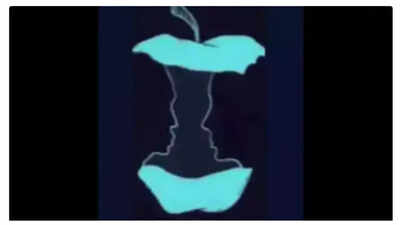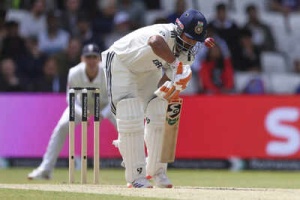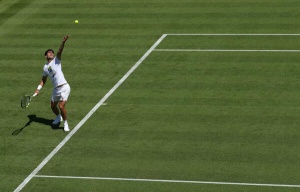Optical illusions continue to captivate audiences, providing a fun way to test observation skills and stimulate the brain. These visual puzzles exploit the way our brains interpret information, leading to perceptions that differ from reality.

This particular illusion, recently shared by Marina Winberg on social media, presents viewers with two possible interpretations: an eaten apple core or two faces in profile. Your initial perception is said to reveal a fundamental aspect of your personality.
Marina Winberg explains, "This image is a classic dual-illusion where you can either see two faces (a man and a woman) looking at each other OR an apple core—what you notice first says a lot about your mindset!”
If the first thing you noticed was the two faces, it suggests that you are a logical and analytical thinker with a strong moral compass. You prioritize careful consideration before action, value stability, and approach problem-solving with creativity. However, your curiosity can sometimes lead you astray.
Alternatively, if you initially saw the apple core, it indicates that you are an intuitive and emotionally aware individual, highly skilled at recognizing subtle cues. You possess the ability to articulate the right words but often choose to remain silent. You value stability and prioritize the protection of things that hold significance for you.
There are three primary categories of optical illusions:
Literal Illusions: These illusions occur when the brain pieces together elements of an image to create a perception of something that is not physically present. An example is the dual-image described above, where viewers can see either two faces or a vase.
Physiological Illusions: These illusions result from overstimulation of the visual system, often due to intense exposure to light, movement, or color. Afterimages and motion illusions fall into this category.
Cognitive Illusions: These illusions are rooted in the brain's subconscious interpretation of information. The Müller-Lyer illusion, where lines appear to be different lengths based on surrounding shapes, is a classic example.
Newer articles
Older articles
 ICC Test Rankings: Pant Hits Career High, Bumrah Stays Top; Root Still King
ICC Test Rankings: Pant Hits Career High, Bumrah Stays Top; Root Still King
 Gavaskar Calls for Kuldeep Yadav Inclusion, Middle-Order Assessment After India's Test Loss to England
Gavaskar Calls for Kuldeep Yadav Inclusion, Middle-Order Assessment After India's Test Loss to England
 Azhar Mahmood Tapped as Interim Test Coach for Pakistan After Gillespie Exit
Azhar Mahmood Tapped as Interim Test Coach for Pakistan After Gillespie Exit
 Iyer's Test Debut Faces Delay Amidst Competition, Says Cricket Expert
Iyer's Test Debut Faces Delay Amidst Competition, Says Cricket Expert
 India's First Dengue Vaccine Nears Approval as Phase 3 Trials Approach Finish Line
India's First Dengue Vaccine Nears Approval as Phase 3 Trials Approach Finish Line
 Prithvi Shaw Acknowledges Career Downturn: Faulty Choices and Lost Focus Derailed Cricket Dreams
Prithvi Shaw Acknowledges Career Downturn: Faulty Choices and Lost Focus Derailed Cricket Dreams
 Rishabh Pant's Fearless Batting Redefining Test Cricket, Says Greg Chappell
Rishabh Pant's Fearless Batting Redefining Test Cricket, Says Greg Chappell
 Vidit Gujrathi Defends Family's Medical Professions After Online Criticism: Chess Star Slams 'LiverDoc' for Disrespect
Vidit Gujrathi Defends Family's Medical Professions After Online Criticism: Chess Star Slams 'LiverDoc' for Disrespect
 Wimbledon Eyes Indian Market: Leveraging Cricket Ties to Ace Expansion Strategy
Wimbledon Eyes Indian Market: Leveraging Cricket Ties to Ace Expansion Strategy
 Asia Cup Set for Mid-September Start as Optimism Returns Amid India-Pakistan Tensions
Asia Cup Set for Mid-September Start as Optimism Returns Amid India-Pakistan Tensions